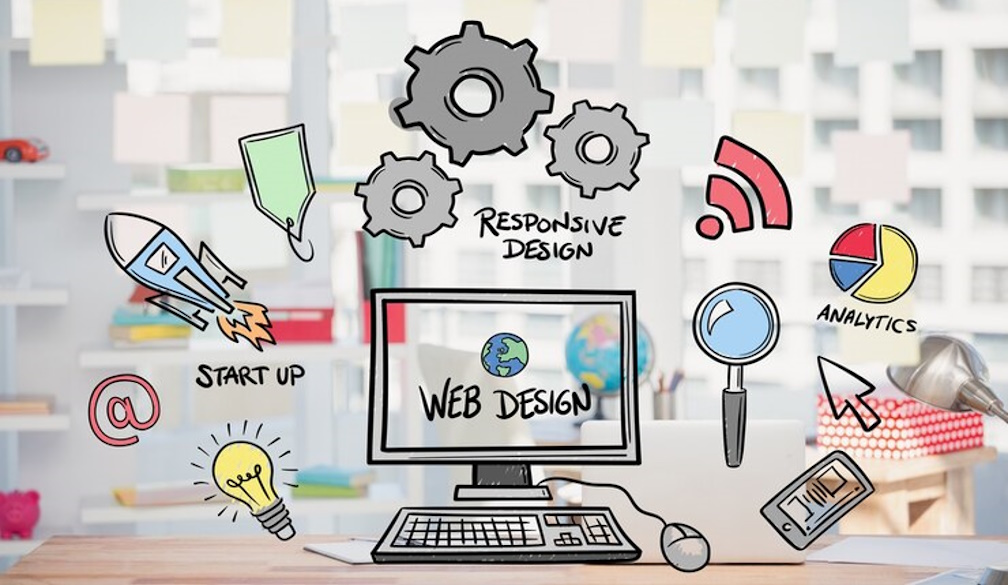Adaptive Typography in Web Design: Crafting Readable Interfaces Across All Devices

We have been using various websites and applications a lot nowadays because with just one click we can access every piece of information. We have been using these sites on different devices like smartwatches and ultra-wide displays and from tiny screens to big screens, the texts of these sites need to be created so that they perfectly suit every screen type. Making the texts according to different viewports is a tough task but hey, we don’t get afraid of unique challenges!
Typography has made it easier to read and use them on every website and application and of course, it makes texts look beautiful too. Adaptive typography has made the texts stay clear, readable, and designed so well that anyone can read it on all kinds of screens; that’s why it is the most important part of modern web design.
Understanding Adaptive Typography
Adaptive typography is everything related to text that helps in changing the size of the font along with the spacing and layout of text. All this happens automatically, which depends on the size of the screen; that text adapts its size according to the phone tablet, or computer. Web design companies even give personal accessibility settings on certain sites where users can adjust the font according to their will. Adaptive texts automatically shape themselves in such a way that they fit the screen, which makes them easier to read and designers use special coding tools like em and rem and clamp(), which help in resizing text smoothly across various screen sizes.
Why Typography Needs to Be Adaptive
Adaptive typography makes reading texts a lot easier and well-designed typography enhances text size so that it keeps our eyes comfortable and helps in following the content. However, when text does not adjust automatically according to the screen like if it’s too small for a phone or too big on a big screen, or if it's hard to see because of bad color contrast, people don’t stay on the site for long and leave because they cannot get the information as they cannot read properly. So, typography not only makes the site look good but also helps in reading and engaging people.
People interested in developing a website should know a couple of reasons why adaptive typography matters.
Device Diversity
Fixed typography would create chaos because nowadays there are various devices with different screen sizes so it won’t serve all of them.
Accessibility
Adaptive texts make reading a lot easier for people with vision impairments, dyslexia, and other challenges.
Content Readability
Smaller screen sizes need responsive texts, which make reading time a lot easier and more pleasant for its users.
Brand Perception
A clear and consistent typography shows the professionalism of the websites and it makes sure that people feel comfortable and websites create a user-friendly impression.
Core Principles of Adaptive Typography
- Fluid Scaling with Relative Units
Many websites often set a font size with an exact pixel but it does not give flexibility and many users cannot visit websites any time they want. However, adaptive typography uses flexible units like em, rem, and vw that make sure texts are flexible and change their size according to the devices and make them easier to read on different devices.
- Optimal Line Length and Spacing
People often think font size is all that matters for a website but line length (also called measure) and line height (or leading) are also important for pleasant reading. Proper spacing between texts is also important because it gives the eye space to move freely and comfortably between lines without getting lost or tired.
The ideal line length lies between 50 and 75 characters for each line for desktop and 35 and 50 for mobile. On the other hand, Line height can lie between 1.4 and 1.6 times the font size for body text.
- Responsive Font Pairing
Fonts come in different sizes but they do not all look good with every size. A fancy or decorative font might look good when it is big. However, if these same fonts are small, they would be hard to read. That’s why you are using adaptive typography; it's better to use simple, easy-to-read fonts that work well on all screens.
- Media Queries for Fine-Tuning
Media queries are the most helpful tool in adaptive typography because they help in changing how text looks depending on the device. You can make bigger headings, adjust the boldness of the text, or even switch to a different font based on the screen size with the help of media queries.
- Contrast and Accessibility
People often don’t notice the contrast of the text, which affects the eyes and reading capability of a person. Adaptive typography makes sure that the text is clear and easier to see so it maintains a perfect contrast between background and text color—like dark letters on a light background—and is easier to read, especially on phones or in dim lighting.
Conclusion
Creating a website needs various tools and the most important is adaptive typography, which is used for making the texts look good and readable for users. It helps make the text accessible and readable on any device despite its screen size, as it adjusts texts automatically depending on whether it's a phone or a computer. Different fonts, sizes, colors, and many other things make a site readable and comfortable for the eyes, and adaptive typography exactly does all of it.









